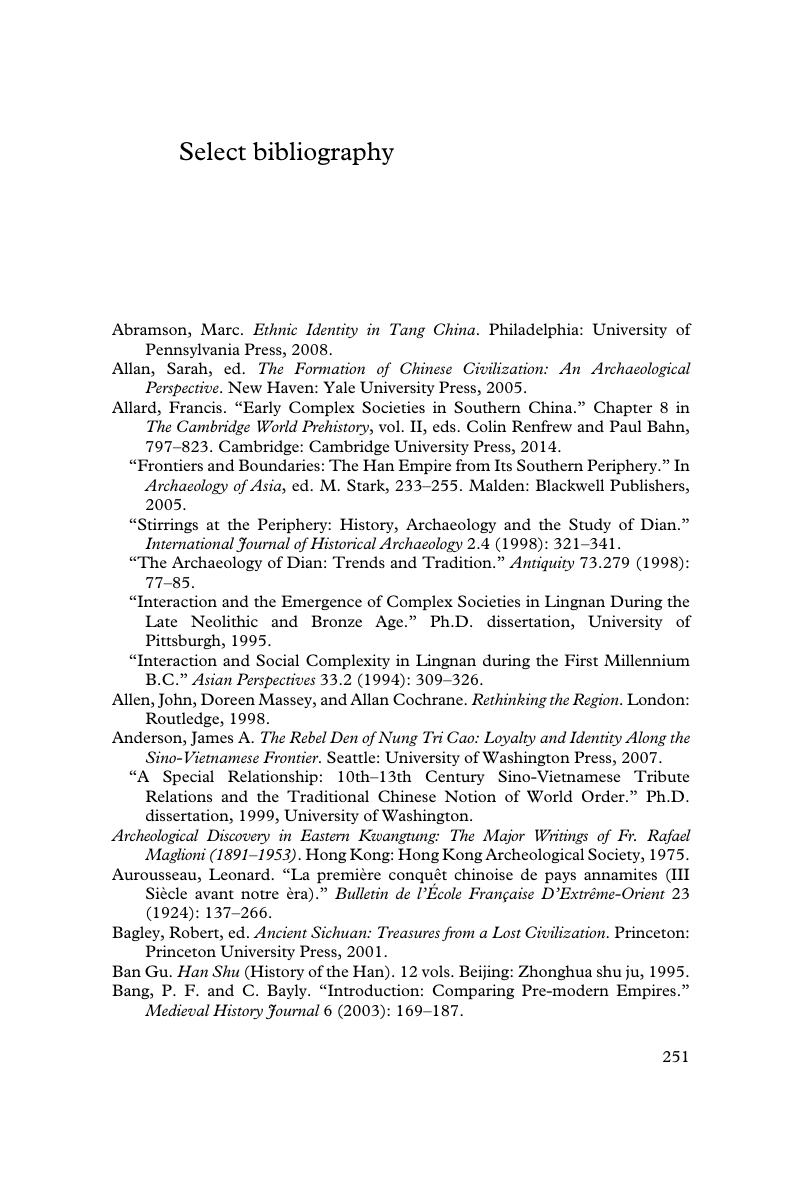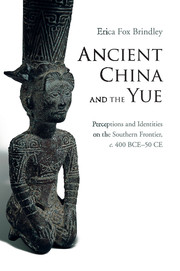Book contents
- Ancient China and the Yue
- Ancient China and the Yue
- Copyright page
- Contents
- Figures, maps, and tables
- Preface
- Acknowledgments
- Note on the text
- Maps - PDF only
- Part I Orientations: definitions and disciplinary discussions
- Part II Timelines and political histories of the Yue state and Han period Yue kingdoms, c. 500–110 BCE
- Part III Performing Hua-xia, inscribing Yue: rhetoric, rites, and tags
- Part IV Performing Yue: political drama, intrigue, and armed resistance
- Select bibliography
- Index
- References
Select bibliography
Published online by Cambridge University Press: 05 September 2015
- Ancient China and the Yue
- Ancient China and the Yue
- Copyright page
- Contents
- Figures, maps, and tables
- Preface
- Acknowledgments
- Note on the text
- Maps - PDF only
- Part I Orientations: definitions and disciplinary discussions
- Part II Timelines and political histories of the Yue state and Han period Yue kingdoms, c. 500–110 BCE
- Part III Performing Hua-xia, inscribing Yue: rhetoric, rites, and tags
- Part IV Performing Yue: political drama, intrigue, and armed resistance
- Select bibliography
- Index
- References
Summary

- Type
- Chapter
- Information
- Ancient China and the YuePerceptions and Identities on the Southern Frontier, c.400 BCE–50 CE, pp. 251 - 267Publisher: Cambridge University PressPrint publication year: 2015



